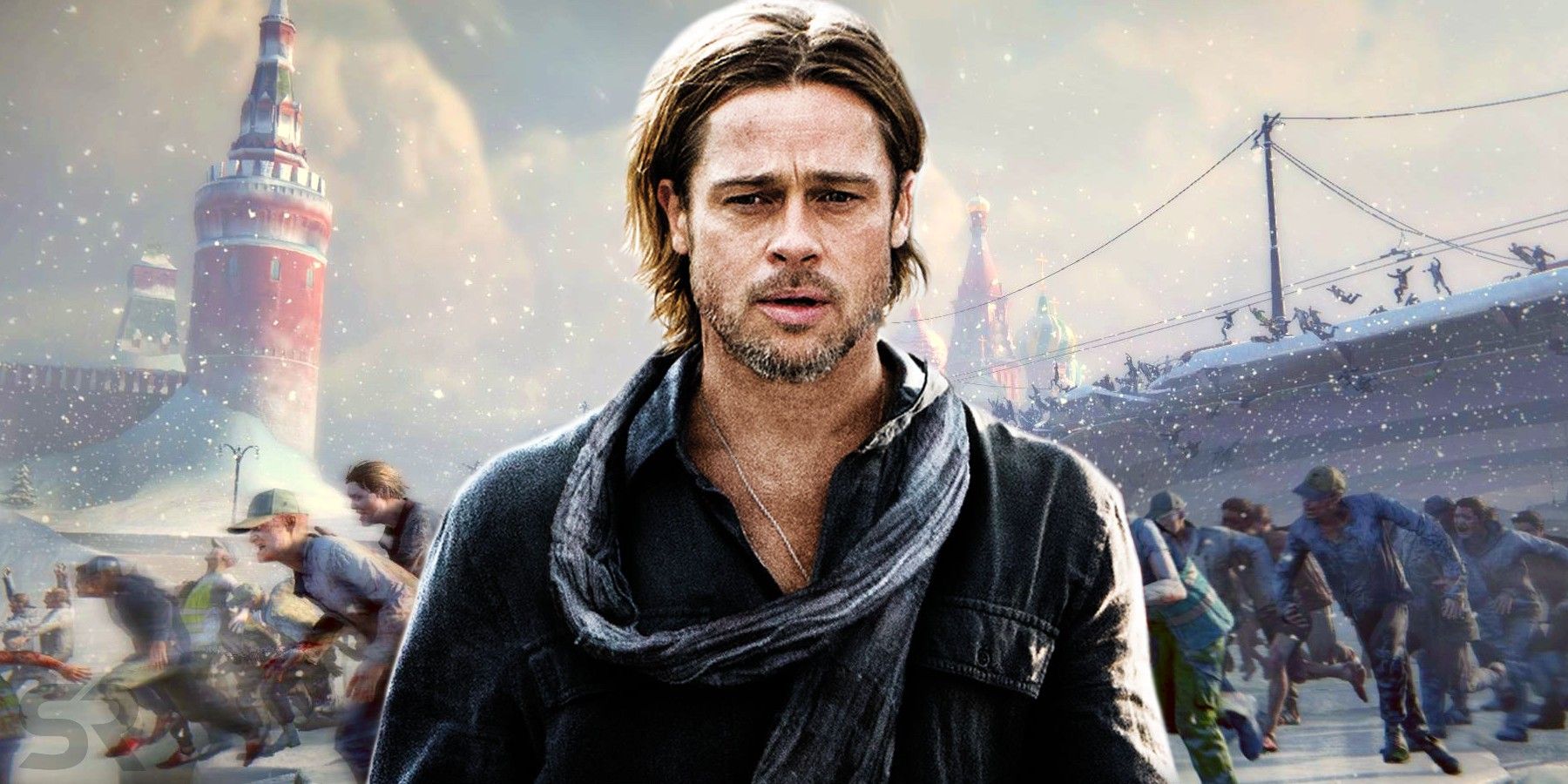The ending of World War Z went through some major changes before the film was released; here's how the movie originally ended and why it was altered. Starring Brad Pitt and released in 2013 amid the zombie craze in Hollywood, World War Z seemed destined for success until reports of major reshoots surfaced. Nevertheless, when audiences and critics alike saw World War Z, most were somewhat surprised to see that the end result was a decent blockbuster.
After watching Gerry Lane (Pitt) and his family survive the outbreak, the movie shifts to follow his attempt to find the source of the virus and potentially a cure. This finale places Lane in a World Health Organization building with a few fellow survivors, but the information he seeks is at the center of the building, which has been overrun by the zombie-like individuals. As World War Z concludes, Lane infects himself with a pathogen that can hide him from those who are infected, and he is able to walk past the rampaging zombies unharmed. A montage that closes the film shows humanity fighting back against the horde, ringing a hopeful ending of humanity finding a way to survive. But this is very different from the original plan for World War Z's conclusion.
World War Z's original ending begins with Lane and Segen (Daniella Kertesz) flying to Moscow where they are immediately drafted into the army being built to fight the zombies. Instead of going to the WHO building, the original ending features a time jump showing a bearded Lane still fighting in Russia during the winter. It's during this time he realizes the zombies move slower in the cold, giving the humans an advantage in these conditions. He's been out of communication with his family this entire time, but he is finally able to speak to his wife, who has secretly had to strike up a relationship with Matthew Fox's paratrooper to keep her and the kids safe. Later on, Lane, Segen, and a character named Simon begin traveling through Russia to go to the United States and save Lane's family. World War Z's final scene had them arriving in America and storming the country to find his family.

This bleaker ending for World War Z came as a result of the script not being entirely finished when production began on the film. After filming was completed and Forster assembled the first cut of the film though, Paramount executives and Pitt did not like the ending. Those who have seen the early cut of World War Z described the ending to Vanity Fair as "abrupt and incoherent," which lines up with the description of the footage that has since been revealed.
In order to fix the ending, Paramount hired Damon Lindelof to re-write the script, ordered seven weeks of reshoots, and spent tens of millions of dollars shooting over 40 minutes of 2-hour blockbuster. Even though all of these changes saw World War Z's budget balloon to over $200 million, it still managed to do fairly well at the box office - earning $540M worldwide. The end result gave Paramount a film that was successful enough to generate sequel conversations, with David Fincher most recently attached to the project. Whether or not World War Z becomes a franchise remains to be seen, but it is clear that the original ending was dramatically different from what audience saw.
from ScreenRant - Feed https://ift.tt/3d3ZZp0

0 Comments